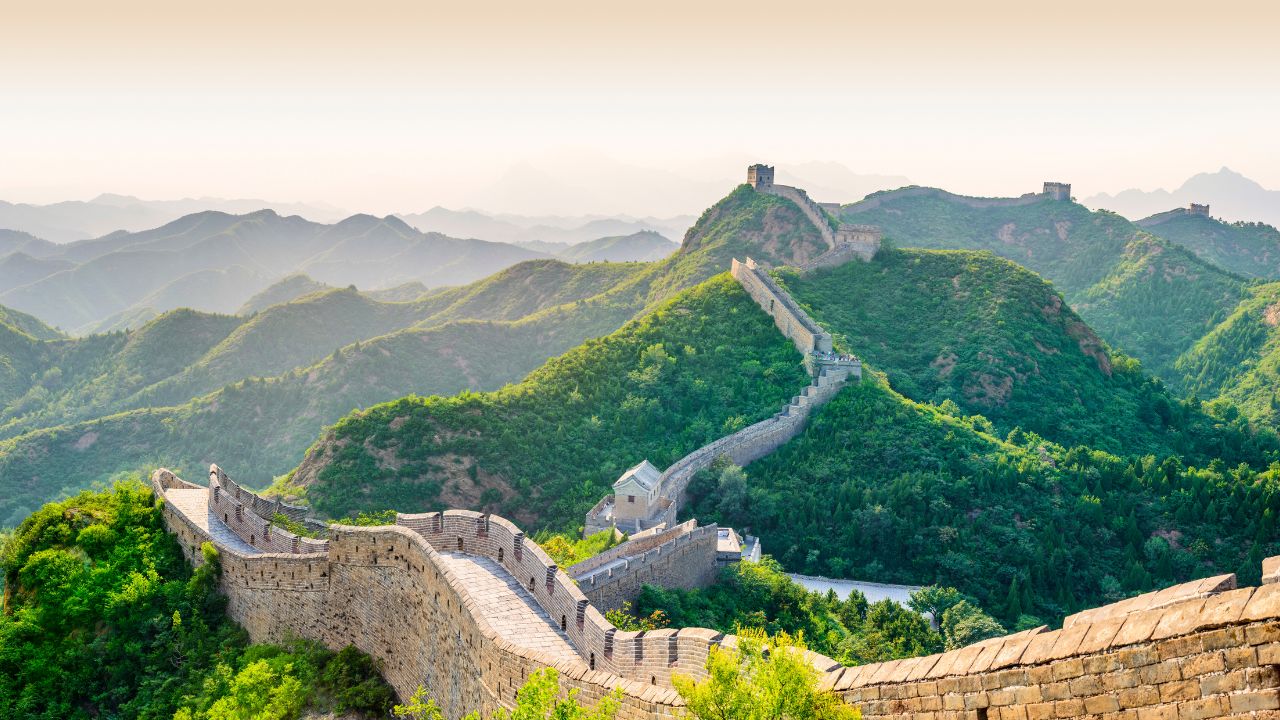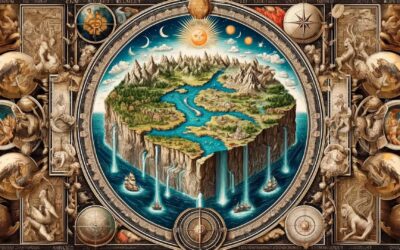There is something inherently fascinating about standing on the edge of a myth. It is where the tangible grasp of reality blurs into the dreamy haze of legend, where we as humans, are drawn by an insatiable curiosity. One such captivating tale that has woven itself into the annals of common knowledge is that of the Great Wall of China, believed to be visible from space. But as with any intriguing narrative, there is more to this story than meets the eye.
Once upon a time, centuries ago, the Chinese emperors embarked on a monumental project that would span generations. Their objective was as daunting as it was ambitious: to construct a barrier of epic proportions, a testimony to human endeavor and resilience. A symbol to ward off the marauding northern tribes, and a monument to the spirit of a civilization, a people, a country – thus was born the Great Wall of China.
Stretching over 13,000 miles, undulating across the rugged Chinese terrain, through mountains, deserts, and grasslands, this awe-inspiring structure was a feat of engineering, demanding the toil of millions of laborers over centuries. Its grey stone ramparts etched against the verdant landscape became an emblem of the land it was built to protect, a visible affirmation of the indomitable human will.
As tales of this monumental endeavor reached the western world, the wall became shrouded in a cloak of myth and fascination. A statement often repeated and unchallenged, began to emerge, “The Great Wall of China, is the only man-made structure visible from space.” An appealing notion, it fueled the aura of the wall, bestowing it an otherworldly significance. It was, however, a statement begging to be tested.
With the advent of the space age in the mid-20th century, humanity took its first steps beyond the confines of Earth’s atmosphere. As astronauts ventured into the great cosmic void, they gazed back at our blue planet. And yet, none mentioned seeing the Great Wall from their celestial vantage point.
When questioned about it, astronaut Alan Shepard, the first American to journey into space, confessed he had not seen the Great Wall. Further human expeditions into space, including those by the Apollo moon missions, failed to spot this legendary structure from their extraterrestrial vantage point. Even Yang Liwei, China’s first astronaut, admitted he hadn’t seen the Wall from space. The myth, it seemed, was beginning to crack under the weight of empirical evidence.
Scientifically, the odds were stacked against the wall’s visibility. The Great Wall is, on average, a mere 30 feet wide. From the altitude of a low Earth orbit, spotting such a narrow structure is like discerning a single human hair from a distance of two miles. Furthermore, the wall is made of materials that blend with the natural landscape, making it even more challenging to distinguish from space.
Despite these facts, why has the misconception persisted for so long?
The myth’s enduring nature could partly be attributed to a photograph taken from NASA’s space shuttle in 2004. The image shows a line meandering across the land, purported to be the Great Wall. However, it’s crucial to note that this picture was taken under specific conditions with high-resolution equipment and the aid of lens magnification. Even so, NASA later clarified that what was captured was not the Wall but a river.
Another reason could be the nature of the myth itself. It conveys a sense of awe and wonder, a testament to human achievement that we instinctively want to believe. In its grandeur, we see a reflection of our potential, our ability to leave a mark so indelible it transcends our Earthly confines and reaches into the cosmos. Sometimes, the allure of such narratives can eclipse the stark rays of truth.
The truth, nonetheless, remains – despite its grandeur and the aura of mystery that surrounds it, the Great Wall of China is not visible from space with the naked eye. Yet, the reality does not detract from its glory. Rather, it compels us to appreciate the wall for what it truly is: a monumental feat of human endeavor, a testament to our history, our struggles, and triumphs. And in that truth, there lies a tale no less fascinating, no less inspiring.
In the end, the Great Wall of China remains an indelible symbol of human achievement, regardless of whether it can be seen from the moon, Mars, or beyond. It continues to draw people from across the globe, standing as a testament to the spirit of humanity, a beacon of our potential. In its enduring presence, it reminds us of the stories we weave, the myths we create, and the truths we discover, as we strive to understand our place in this vast universe.
In a world that sometimes seems smaller with each passing day, the Great Wall stands as a reminder of our capacity for greatness, of the stories we can weave, and the myths we can dispel. It symbolizes the enduring power of our collective imagination to shape our understanding of the world and the cosmos beyond. While the myth of its visibility from space may be demystified, the Great Wall of China’s legacy remains unmarred, a symbol of the indomitable human spirit, reaching, always reaching, for the stars.












0 Comments